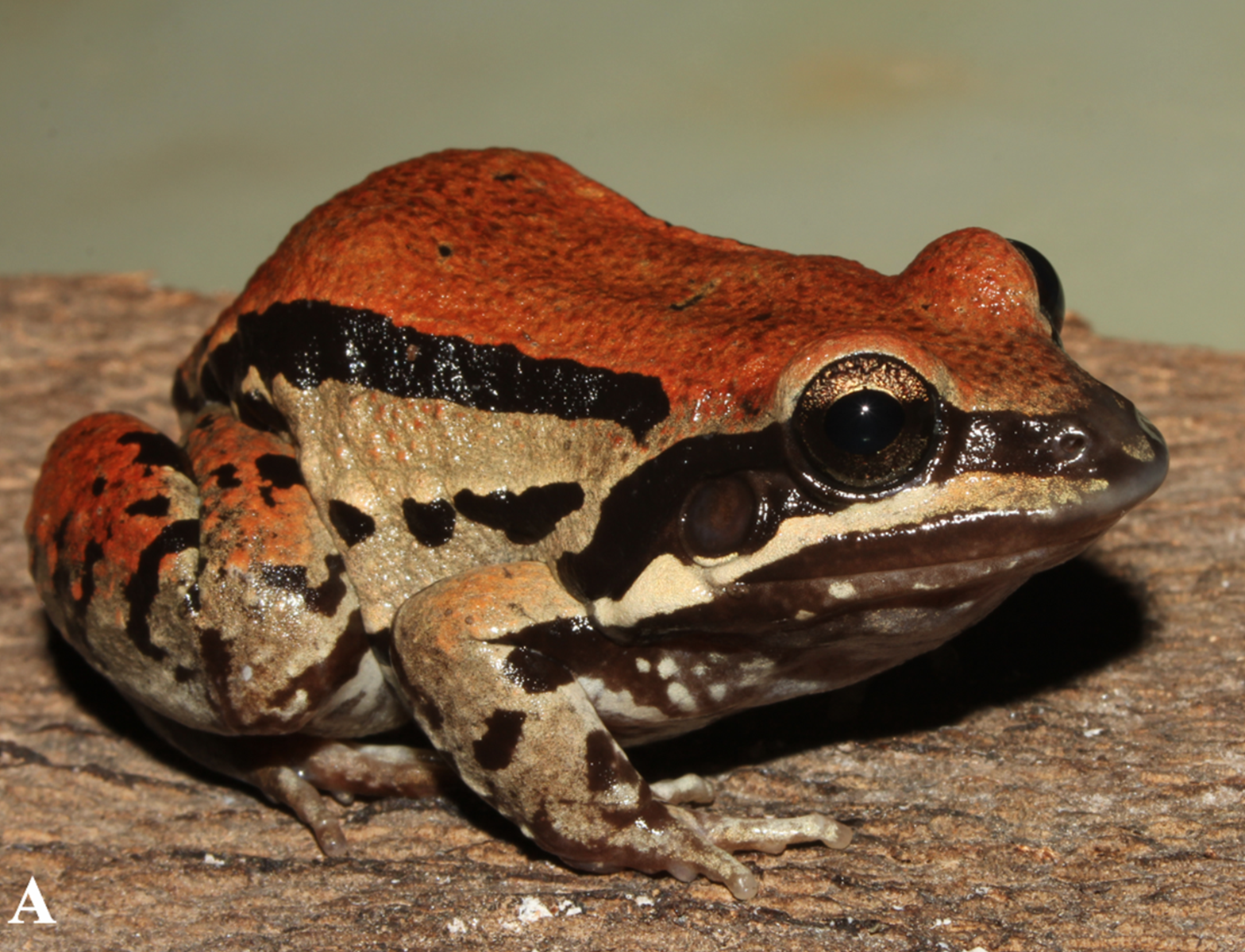Leptodactylus Rhodomystax on:
[Wikipedia]
[Google]
[Amazon]
''Leptodactylus'' is a
 There are 84 species in this genus:
There are 84 species in this genus:
genus
Genus (; : genera ) is a taxonomic rank above species and below family (taxonomy), family as used in the biological classification of extant taxon, living and fossil organisms as well as Virus classification#ICTV classification, viruses. In bino ...
of leptodactylid frog
A frog is any member of a diverse and largely semiaquatic group of short-bodied, tailless amphibian vertebrates composing the order (biology), order Anura (coming from the Ancient Greek , literally 'without tail'). Frog species with rough ski ...
s. It includes the species
A species () is often defined as the largest group of organisms in which any two individuals of the appropriate sexes or mating types can produce fertile offspring, typically by sexual reproduction. It is the basic unit of Taxonomy (biology), ...
commonly called ditch frogs or white-lipped frogs. It is very similar to ''Physalaemus
''Physalaemus'' is a large genus of Leptodactylidae, leptodactylid frogs. These frogs, sometimes known as dwarf frogs or foam frogs, are found in South America. It is very similar to ''Leptodactylus'', a close relative, and indeed the recently ...
'', a close relative, and indeed the 2005 described ''Leptodactylus lauramiriamae
''Leptodactylus'' is a genus of leptodactylid frogs. It includes the species commonly called ditch frogs or white-lipped frogs. It is very similar to ''Physalaemus'', a close relative, and indeed the 2005 described '' Leptodactylus lauramiriamae ...
'' is in some aspects intermediate between them.
Etymology
The name means ‘slender finger’, from '' leptos'' (‘thin, delicate’) and the Greek ' (, ‘finger, toe’).Taxonomy
The genus ''Leptodactylus''sister taxon
In phylogenetics, a sister group or sister taxon, also called an adelphotaxon, comprises the closest relative(s) of another given unit in an evolutionary tree.
Definition
The expression is most easily illustrated by a cladogram:
Taxon A and ...
is the genus ''Hydrolaetare
''Hydrolaetare'' is a genus of leptodactylid frogs. These frogs are found in Colombia, French Guiana, Peru, Bolivia, and Brazil
Brazil, officially the Federative Republic of Brazil, is the largest country in South America. It is the world' ...
''.
The genus is composed of 4 species groups
In biology, a species complex is a group of closely related organisms that are so similar in appearance and other features that the boundaries between them are often unclear. The taxa in the complex may be able to hybridize readily with each oth ...
. However, 3 species have not been assigned to a species group ('' L. hylodes'', ''L. lauramiriamae'', ''L. ochraceus'').
Species
 There are 84 species in this genus:
There are 84 species in this genus:
Footnotes
References
* (2005): ''Leptodactylus lauramiriamae'', a distinctive new species of frog (Amphibia: Anura: Leptodactylidae) from Rondônia, Brazil. ''Proceedings of the Biological Society of Washington'' 118(3): 590–595. DOI: 10.2988/0006-324X(2005)118 90:LLADNS.0.CO;2HTML abstractExternal links
* * {{Authority control Amphibian genera Amphibians of Central America Amphibians of North America Amphibians of South America Amphibians of the Caribbean Taxa named by Leopold Fitzinger